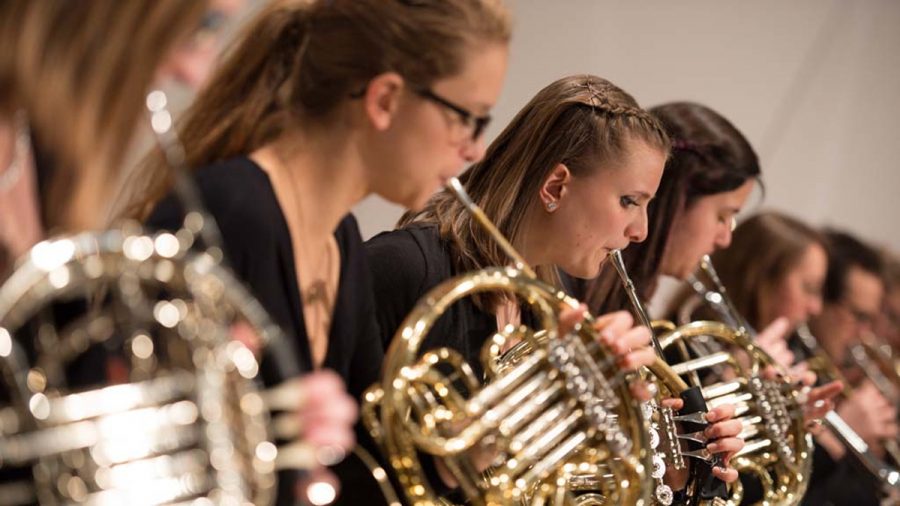Gender inequalities afflict all aspects of society, even the arts
Women in music and theatre are disadvantaged by our culture
More stories from Sam Farley
Photo by SUBMITTED
Women continue to earn about 78 cents to a man’s dollar not only in the business setting, but also in the arts.
Gender inequality has persisted in America since the very formation of our nation, affecting all aspects of society — political, social and economic, to name a few. A victim to this injustice that is perhaps less suspected, however, is the arts.
According to an article by National Public Radio (NPR), a study conducted by Lehigh University examined the incomes of over 30,000 people with an arts degree and found that men received an average of $13,000 more than women.
This gap worsens for women in higher income brackets, in the arts industry and otherwise.
The Bureau of Labor Statistics reported that in 2009, women working in the financial industry earned 70 cents to a man’s dollar, whereas women in the construction business earned 92 cents. The data shows as professionalism increases, women’s wages decrease in relation to men’s, and the arts are no exception.
An article by Forbes said the combined incomes of the top-paid actresses in 2013 were two and a half times less than those of the top-paid actors. The top ten actors made an impressive total of $465 million to the actresses’ $181 million.
These findings may come as a surprise; one might reason the arts department, a community known for its support for justice and equal rights, would not permit such monetary disparities between genders in its field.
UW-Eau Claire student Ceana Olson, a freshman psychology major and former member of the University Band, said she was shocked such a wide wage gap between male and female celebrities exist.
“I thought that once you got to the more elite category, (the wage gap) would even out more because there is such a spotlight on them,” Olson said.
The music industry also harbors imbalances between genders.
Men dominated the best-selling albums list of 2013 with Justin Timberlake secured at the top spot, selling 2.4 million copies. Eminem and Luke Bryan took second and third place, selling 1.7 and 1.5 million albums. A female artist did not appear on the list until the eighth spot.
Beyoncé was the first to represent the ladies, selling 1.3 million copies of her self-titled album. The second woman to make the charts, Katy Perry, came in at number 14.
Clearly, men in the arts industry experience more success than women.
Unfortunately, gender bias is found not only in pop culture but also right here at Eau Claire.
Wisconsin females are paid significantly less than men, earning an average of 78 percent of a Wisconsin male’s salary, according to an article from the National Partnership for Women and Families’ article, entitled “Wisconsin Women and the Wage Gap.”
This affects each female faculty member in Eau Claire, and furthermore, the graduates who will enter the Wisconsin workforce someday. Olson said she was especially surprised this gap persists on a college campus more liberal in nature.
Maile Olson, studying geology with a theatre minor, is one of the few female percussionists in the University Band. She said men tend to dominate the instruments that produce the strongest sound.
“(The brass instruments) are more of an aggressive noise and are associated with more of a masculine feel,” Maile said.
She also said although there are apparent gender trends in the music and theatre departments, both genders are treated equally.
“In theatre, there are only a couple women on staff (at Eau Claire) … but I don’t see any different treatment (towards different genders),” Maile said.
Gender trends and stereotypes are an inevitable result of our culture, but it is how we choose to respond to these preexisting notions that determines our nation’s values toward gender equality.
Equal pay and a recognition of women’s capabilities in society should be made available. As a nation, we need to treat both genders equally in all aspects of society, especially economically and socially.

